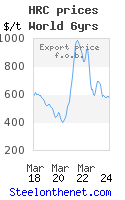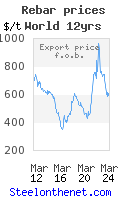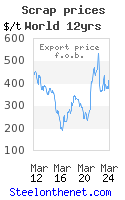Spot Prices Weigh on Coal Producers [BlackDiamond]
Spot Prices Weigh on Coal Producers
Tuesday September 19
By James Amend, AP Business Writer
NEW YORK (AP) -- Spot coal prices have plummeted over the last 12 months and shares of most coal producers have gone along for the ride, but overall pricing in the industry is surprisingly robust.
Until this summer, spot coal prices, or the price a customer might pay in a one-time transaction for immediate delivery, were riding high. According to the latest figures available from the government's Energy Information Administration, a ton of Central Appalachian coal on the spot market finished last week at $49.90. That's more 12.5 percent off the $57 coal brought a year ago and 20 percent off the $62.25 it went for in January 2005.
Fred Freme, a researcher at the administration, noted that 2005 was a bit of an anomaly.
"It was a challenging year for the coal industry," he said.
Two train derailments out of the expansive Powder River Basin in Wyoming in May of 2005 curtailed scheduled deliveries of western coal and drove up demand on the spot market, particularly from big utilities, for eastern varieties. In fact, some lawsuits by utilities arguing that some producers diverted a portion of their supplies from contract to spot to fatten profits are still being heard.
Demand for spot market coal from emerging nations, especially China, also rose in 2005 and hurricane activity slowed production of coal's chief rival, natural gas. In addition, coke plant consumption of coal was higher last year and so were exports of metallurgic coal for use by overseas steel manufacturers.
"It all combined to create a sort of mass hysteria and demand may or may not have been as high as people thought," Freme said.
Now inventories at utilities are definitely swollen and coal producers are paying the price. According to the latest figures available from the Department of Energy, June inventories at utilities stood at a reasonably comfortable 46 days supply. That compares to 30 days supply a year ago.
Overall, according to David M. Khani, an analyst at Friedman, Billings, Ramsey & Co., the market is oversupplied by about 20 million tons.
Meanwhile, shares of coal producers like Peabody Energy Corp. and Arch Coal Inc. are hovering near 52-week lows. Since hitting 52-week highs on May 11, shares of Peabody Energy and Arch Coal have each shed about 50 percent. And companies like Massey Energy, Alpha Natural Resources and Consol Energy are trimming production with hopes removing some 2.2 million tons from the market in the coming months.
Spot coal prices, however, account for only 6 percent to 8 percent of the industry's sales. The remainder of annual sales, or about 80 percent, are on contracts that are negotiated on mostly an annual basis. A look at delivery prices, which combines spot prices and contract prices, reveals that the price paid for a ton of coal is on the rise.
In the first four months of 2004, the average delivery price stood at $26.72, according to government figures. Over the same period in 2005 it rose to $30.25 and in the first five months of 2006 it reached $34.35. The price increases figure in factors like rising production costs, new safety requirements and fuel surcharges levied by the railroads that transport the coal.
But Ann Kohler, an analyst at Caris & Co., said delivery prices aren't an accurate pricing gauge. That's because contracts are negotiated year-to-year and as those based on cheaper coal rates expire, contracts with newer, more expensive rates are signed. And the starting point for negotiations between coal producers and their customers is typically the present spot rate.
Kohler also warned that trimming production by a couple million tons in the coming months probably won't spur greater demand since the industry produces more than 1.1 billion tons annually.
"What coal stocks need in the near term is a cold winter and economic strength," she said.
blogger@steelonthenet.com
Tuesday September 19
By James Amend, AP Business Writer
NEW YORK (AP) -- Spot coal prices have plummeted over the last 12 months and shares of most coal producers have gone along for the ride, but overall pricing in the industry is surprisingly robust.
Until this summer, spot coal prices, or the price a customer might pay in a one-time transaction for immediate delivery, were riding high. According to the latest figures available from the government's Energy Information Administration, a ton of Central Appalachian coal on the spot market finished last week at $49.90. That's more 12.5 percent off the $57 coal brought a year ago and 20 percent off the $62.25 it went for in January 2005.
Fred Freme, a researcher at the administration, noted that 2005 was a bit of an anomaly.
"It was a challenging year for the coal industry," he said.
Two train derailments out of the expansive Powder River Basin in Wyoming in May of 2005 curtailed scheduled deliveries of western coal and drove up demand on the spot market, particularly from big utilities, for eastern varieties. In fact, some lawsuits by utilities arguing that some producers diverted a portion of their supplies from contract to spot to fatten profits are still being heard.
Demand for spot market coal from emerging nations, especially China, also rose in 2005 and hurricane activity slowed production of coal's chief rival, natural gas. In addition, coke plant consumption of coal was higher last year and so were exports of metallurgic coal for use by overseas steel manufacturers.
"It all combined to create a sort of mass hysteria and demand may or may not have been as high as people thought," Freme said.
Now inventories at utilities are definitely swollen and coal producers are paying the price. According to the latest figures available from the Department of Energy, June inventories at utilities stood at a reasonably comfortable 46 days supply. That compares to 30 days supply a year ago.
Overall, according to David M. Khani, an analyst at Friedman, Billings, Ramsey & Co., the market is oversupplied by about 20 million tons.
Meanwhile, shares of coal producers like Peabody Energy Corp. and Arch Coal Inc. are hovering near 52-week lows. Since hitting 52-week highs on May 11, shares of Peabody Energy and Arch Coal have each shed about 50 percent. And companies like Massey Energy, Alpha Natural Resources and Consol Energy are trimming production with hopes removing some 2.2 million tons from the market in the coming months.
Spot coal prices, however, account for only 6 percent to 8 percent of the industry's sales. The remainder of annual sales, or about 80 percent, are on contracts that are negotiated on mostly an annual basis. A look at delivery prices, which combines spot prices and contract prices, reveals that the price paid for a ton of coal is on the rise.
In the first four months of 2004, the average delivery price stood at $26.72, according to government figures. Over the same period in 2005 it rose to $30.25 and in the first five months of 2006 it reached $34.35. The price increases figure in factors like rising production costs, new safety requirements and fuel surcharges levied by the railroads that transport the coal.
But Ann Kohler, an analyst at Caris & Co., said delivery prices aren't an accurate pricing gauge. That's because contracts are negotiated year-to-year and as those based on cheaper coal rates expire, contracts with newer, more expensive rates are signed. And the starting point for negotiations between coal producers and their customers is typically the present spot rate.
Kohler also warned that trimming production by a couple million tons in the coming months probably won't spur greater demand since the industry produces more than 1.1 billion tons annually.
"What coal stocks need in the near term is a cold winter and economic strength," she said.
blogger@steelonthenet.com




0 Comments:
Post a Comment
<< Home